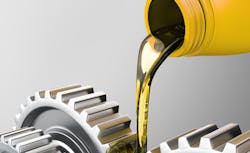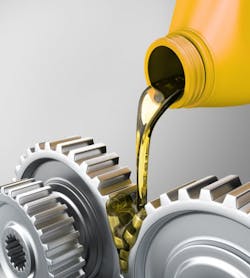Avoid Energy Waste by Using the Correct Gear Oil
The typical energy savings project focuses on either lighting or motors. And generally, the project is about the technology. For example, the lights get replaced with LED (often, but not always, the best choice). Or a few motors are replaced with energy-efficient ones.
These kinds of projects are usually good to do, if you can get the budget allocated for them. But there’s a good chance you may not get that budget allocated. The cost of large lighting projects or motor replacements can be enough to cause a proposal to be delayed or rejected.
What if you had a way of actually raising that money yourself? Or at least raising sufficient funds to offset enough of the project cost to get the bean counters to give you their approval? If you look closely, you may find the money is right there in front of you.
In the typical industrial plant, one type of equipment you see connected to a motor is the gearbox. A large plant may have hundreds of gearboxes. The lubricant in a gearbox should be gear oil, and gear oil has a distinct odor.
Typically, an industrial gearbox has a case plug on top (for adding oil). Remove it and see if you detect that distinct gear oil smell (it has a sulfurous tinge to it). If not, the mechanics probably need to service or replace that gearbox.
Now, use your infrared camera or spot temperature gun to measure the temperature through that opening. With good oil at the correct level, that temperature should be a few degrees above ambient.
Excess temperature in the gearbox means energy is being wasted, both in the box and in the motor that is driving the box. It also means that gearboxes are being wasted. That excess temperature could be because of mechanical wear, alignment issues, or other physical problems. But usually, it’s because of lubrication deficiencies.
At one manufacturing plant, a cost initiative resulted in automotive engine oil instead of gear oil being used in gearboxes. And instead of a synthetic oil, it was old-technology paraffin-based oil (this has a lot of internal friction in the lubricant). Use of the wrong oil combined with general inattention to checking lubrication levels meant the gearboxes ran much hotter than they should. The temperature issue was identified by an electrician who was a (rather thorough) thermographer.
After the mechanics flushed each gearbox and put in the correct amount of the correct oil, the delta between ambient and in the box decreased by 30°F to 45°F on each gearbox. Not surprisingly, motor winding temperature also decreased (the motors did not have to work as hard). Only three motors were used as benchmarks, but the decrease was about 25°F per motor.
If someone had taken the time to calculate how much electricity it took to heat the motors and gearboxes to that extent every minute of every day, the total would have been significant. But at this plant, nobody took the time to do that because this same electrician was working his way through a list of other energy waste issues to identify and resolve. Those included low power factor at the actual motor and voltage drop on feeders.
About the Author

Mark Lamendola
Mark is an expert in maintenance management, having racked up an impressive track record during his time working in the field. He also has extensive knowledge of, and practical expertise with, the National Electrical Code (NEC). Through his consulting business, he provides articles and training materials on electrical topics, specializing in making difficult subjects easy to understand and focusing on the practical aspects of electrical work.
Prior to starting his own business, Mark served as the Technical Editor on EC&M for six years, worked three years in nuclear maintenance, six years as a contract project engineer/project manager, three years as a systems engineer, and three years in plant maintenance management.
Mark earned an AAS degree from Rock Valley College, a BSEET from Columbia Pacific University, and an MBA from Lake Erie College. He’s also completed several related certifications over the years and even was formerly licensed as a Master Electrician. He is a Senior Member of the IEEE and past Chairman of the Kansas City Chapters of both the IEEE and the IEEE Computer Society. Mark also served as the program director for, a board member of, and webmaster of, the Midwest Chapter of the 7x24 Exchange. He has also held memberships with the following organizations: NETA, NFPA, International Association of Webmasters, and Institute of Certified Professional Managers.

